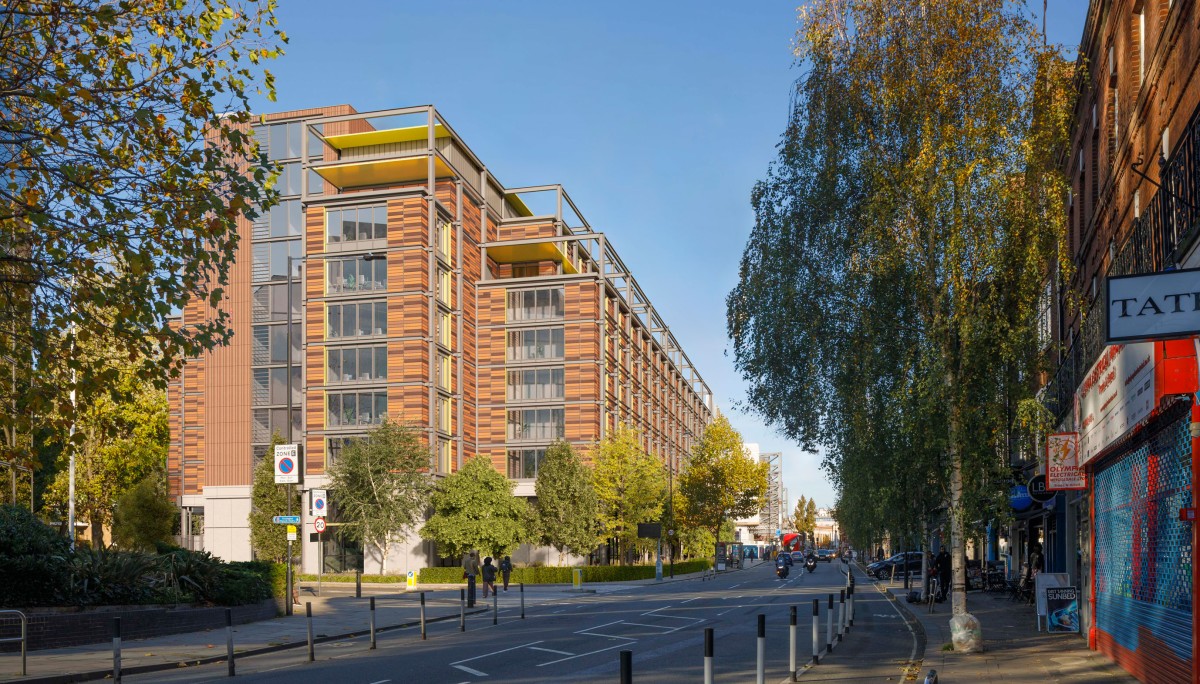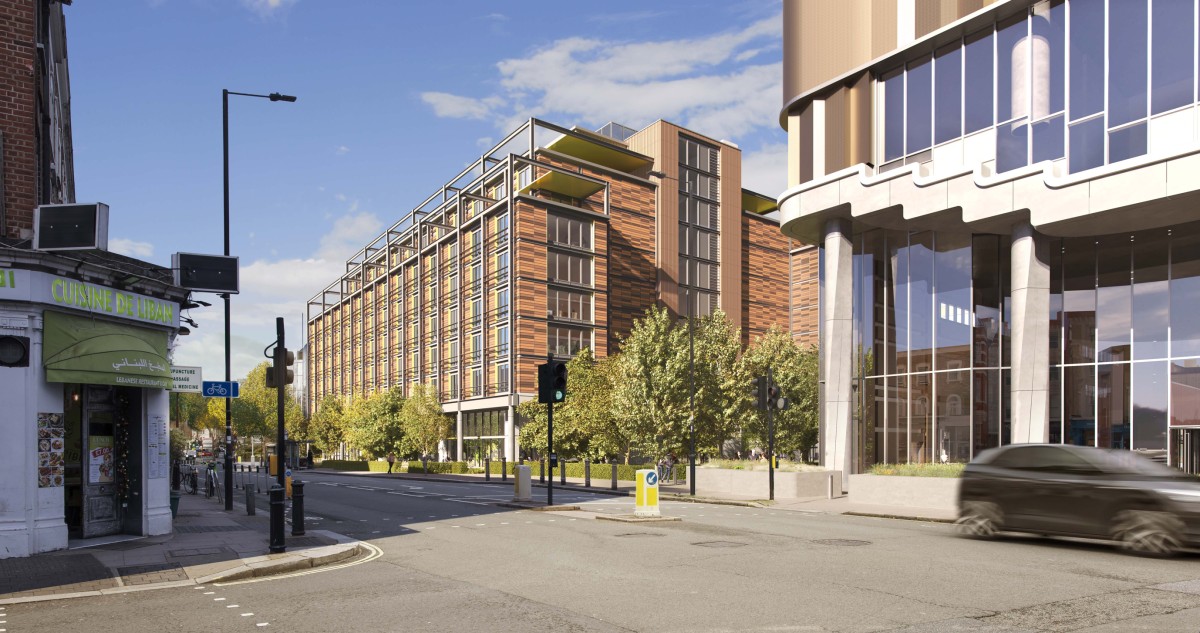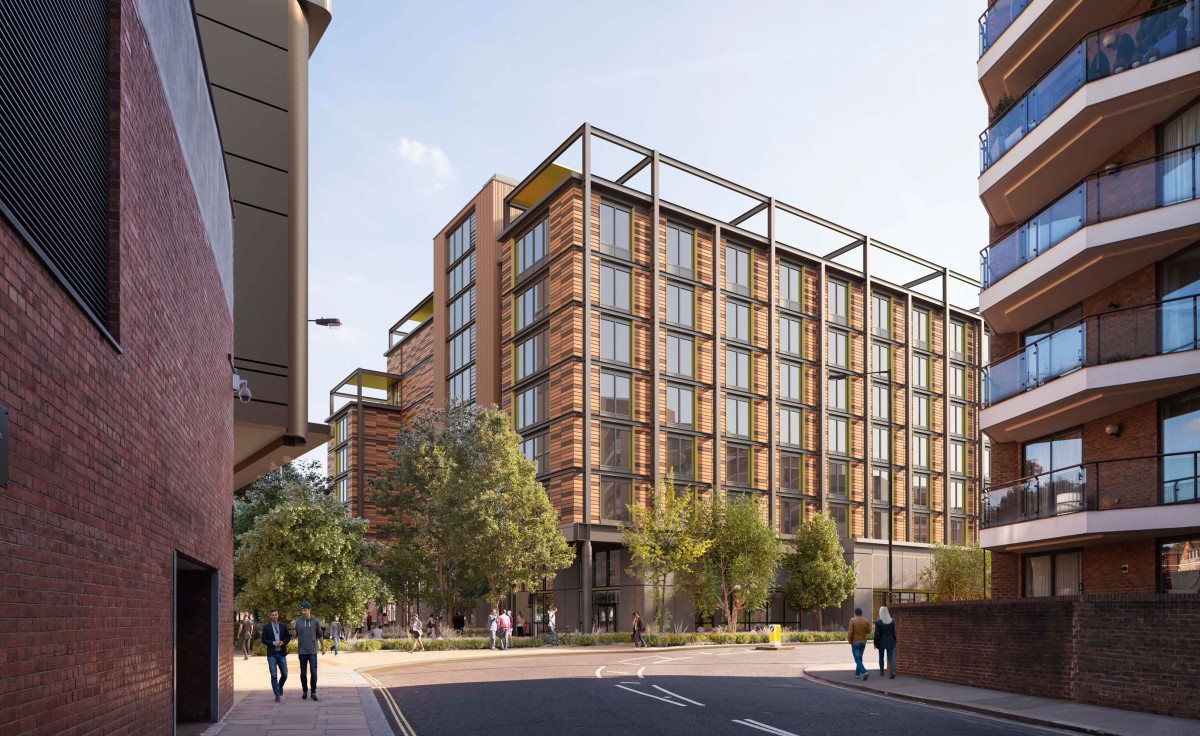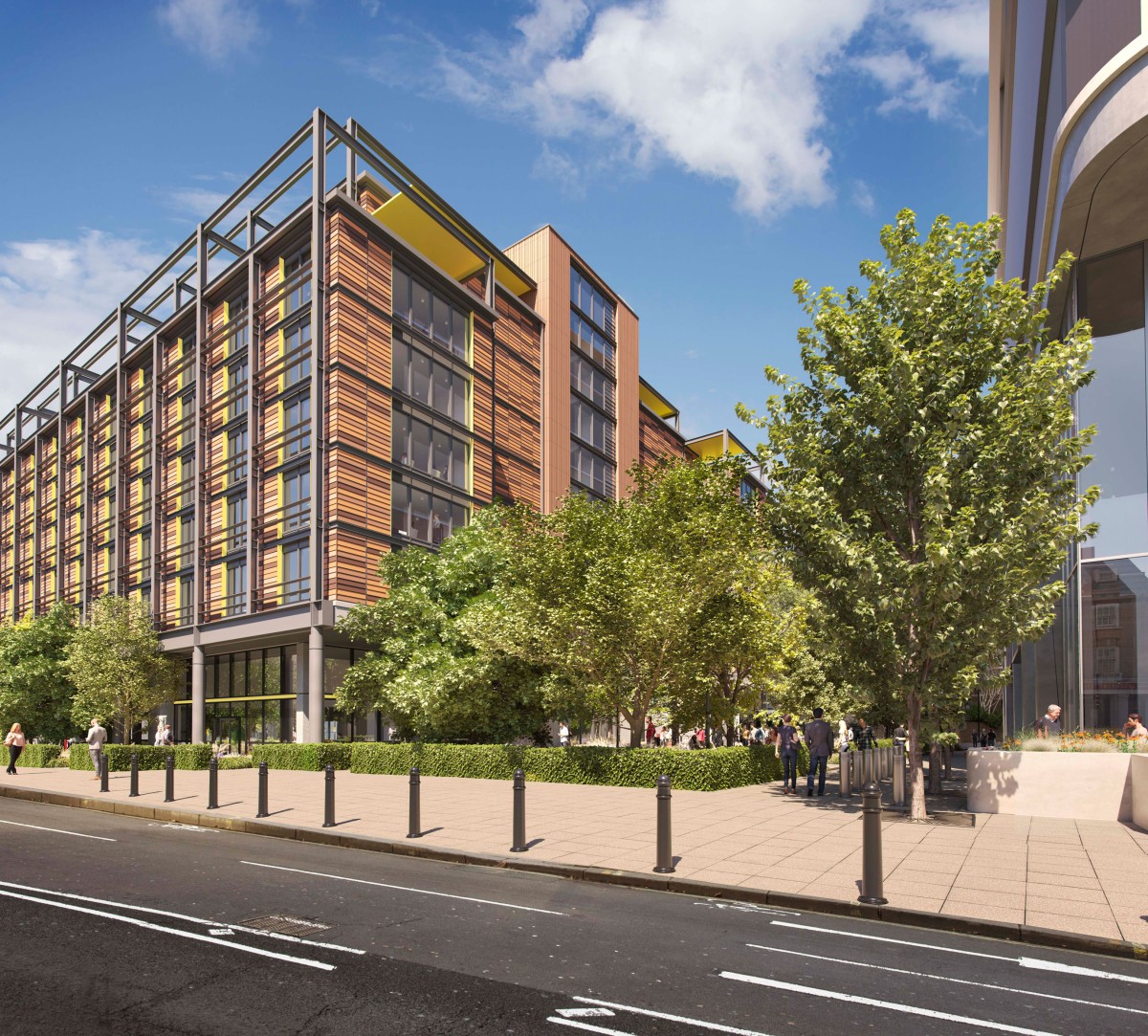21 October 2020
Another successful appeal outcome!
Posted 18 September 2024 by Warren Kidson

We are delighted to announce that our scheme for Big Yellow Self Storage at 66 Hammersmith Road, West Kensington was granted planning permission at the end of August. Not only will it will be situated on a very prominent site, next door to Olympia and immediately adjacent to the new G-Gate theatre currently under construction but the scheme when built, will become the largest self storage building in Europe. The development comprises the demolition of the existing 1980s office building currently occupying the site and the construction of a new 11-storey building which will contain the self storage facility as well as affordable workspace and community space. The scheme will be a flagship store for Big Yellow incorporating a variety of features and facilities to support SME, start-ups and micro businesses in the Hammersmith area.
The building’s design reflects the prominence and stature of the site’s location, and is a carefully crafted response to its context. The massing includes a “ziggurat” approach to the upper storeys in deference to nearby residential development and heritage assets. However, a simpler grid form is suggested through the introduction of a structural exo-skeleton for the building which provides a framework for solar control fins and gives depth and articulation for the elevation treatment. The building itself will be clad with profiled terra cotta cladding, a material which has the advantages of durability, non-combustibility, a high degree of articulation, recyclability and low weight without some of the disadvantages that brick would have for this project. The building’s position on the site helps to reinstate the historic pattern of development with a perimeter block form which addresses the street in a direct way, albeit with a generous landscape buffer incorporating plants and rain gardens specifically selected to meet BNG requirements. At low level the building will be clad with precast concrete panels providing a robust and durable base as well as a canvas upon which to introduce public art. Careful consideration has been given to the disposition of the different uses in the building’s layout to maximise active street frontage and opportunities for the community space users to benefit from the newly created public realm.
The site has a fascinating history being the location of the Lyons headquarters from which they oversaw their network of bakeries, tea houses and ice lolly manufacture. It was also the location of the creation of the world’s first business computer named LEO although the word “computer” was not used back then. It has been fascinating to learn more about the history of the site from descendants of the Lyons family and the marvellous LEO Society whose members worked on LEO or its subsequent iterations. The history of the site has been distilled into a public art piece by acclaimed artist Kerry Lemon which will be embossed into the fabric of the building and tells the story of what happened there during the twentieth century.
It was unfortunate that notwithstanding a number of community and economic benefits the scheme was not determined via the local authority planning process and the applicant was forced to appeal for non-determination. In the end the reasons for refusal were focused on three issues relating to use, sustainable transport and cycle safety and the appeal was determined by public inquiry. Although neither “design” nor “appearance” were cited as reasons for refusal, it is difficult to fully extricate architectural design decisions from other matters and consequently Anna Ryten attended the inquiry on behalf of Mountford Pigott to support our team on any matters with architectural implications.
The Big Yellow inquiry team was led by Simon Bird KC and included Andrew Deller (DWD, planning), Barney Stringer (Quod, socio-economics) and Chris Elliot (Rappor, transport) as main witnesses at the appeal which was heard over a four day period. The appeal decision carefully weighed the merits of the scheme with potential policy non-compliance and concluded in favour of the scheme’s benefits which include: affordable workspace, job creation, support for SMEs start-ups and micro business, support for creative enterprise, new community space, new public art, enablement of new public space, BNG gains, LZC and a low energy building and central to the scheme new self storage space in an area which is under-served.
We are pleased to see that this will make more than a hat trick of successful appeal decision for our design schemes for our client Big Yellow Self Storage following on from recent successes in Kentish Town, Wapping and Epsom.



